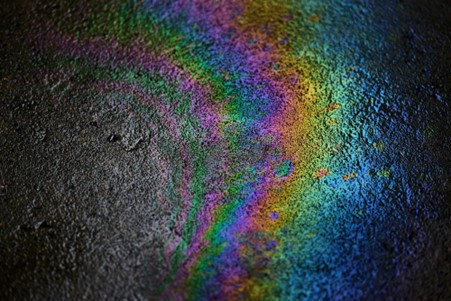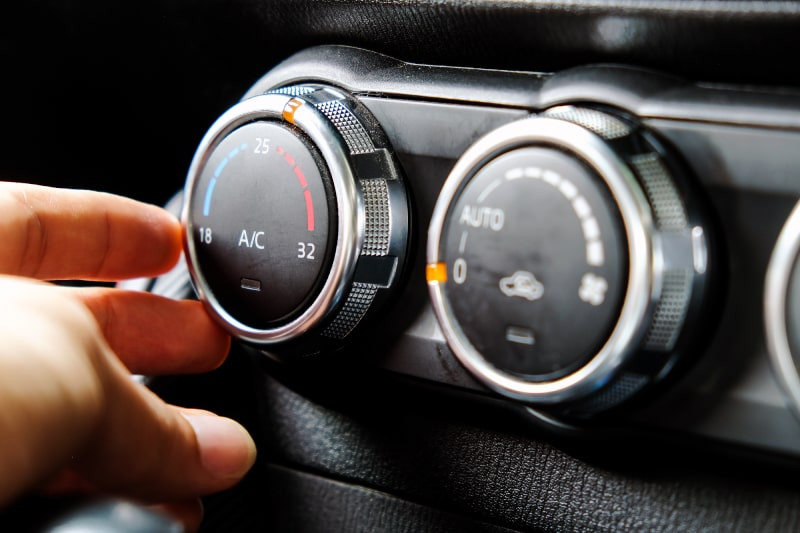How to Fix Fog Inside Car Windows Quickly

Fog inside car windows can be frustrating and dangerous, especially when it impairs your visibility. CARDIAGTECH.NET offers top-notch tools to help you diagnose and eliminate the root causes of this issue, ensuring a clear view and a safer driving experience. By understanding the causes of window fog and utilizing the correct techniques and tools, you can effectively troubleshoot moisture buildup and maintain optimal visibility, leading to a safer and more enjoyable driving experience. With CARDIAGTECH.NET, address vehicle moisture concerns confidently, utilizing advanced diagnostic equipment for clearer visibility and enhanced safety.
1. Understanding Why Fog Forms Inside Car Windows
Fog forms inside car windows due to condensation. Condensation occurs when warm, moist air comes into contact with a cold surface. The air’s moisture condenses into tiny water droplets, creating fog. Here’s a detailed breakdown:
1.1. The Science of Condensation
Condensation is a natural process governed by the laws of thermodynamics. According to the National Weather Service, condensation occurs when air reaches its dew point—the temperature at which air becomes saturated with water vapor. When this saturated air meets a surface colder than the dew point, the water vapor turns into liquid.
1.2. Common Causes of Interior Fog
Several factors can cause fog to form inside your car windows:
- Humidity: High humidity levels outside the car increase the amount of moisture in the air that can enter the vehicle.
- Occupants: People inside the car release moisture through breathing and perspiration, raising the humidity level inside the car.
- Wet Items: Wet clothing, umbrellas, or other damp items brought into the car can evaporate, adding moisture to the air.
- Leaks: Leaks in the car’s seals or windows can allow moisture to enter the car’s interior.
- Air Conditioning and Heating: Using air conditioning or heating systems can sometimes exacerbate fogging if not used correctly.
1.3. External Weather Conditions
External weather conditions play a significant role in the formation of fog. For instance, during rain or snow, the outside air is often saturated with moisture. When this moisture combines with the temperature differences inside the car, fog becomes more likely.
1.4. Temperature Differences
Temperature differences between the inside and outside of the car are crucial. In winter, the cold exterior and the warm interior create an ideal environment for condensation. Similarly, in summer, a cold air-conditioned interior and a hot, humid exterior can lead to fogging.
2. Immediate Steps to Defog Car Windows
When fog obstructs your view, quick action is essential. Here are immediate steps you can take:
2.1. Using the Defroster
The defroster is your first line of defense. Here’s how to use it effectively:
- Turn on the defroster: Locate the defroster button, usually marked with a windshield icon with wavy arrows, and activate it.
- Adjust the temperature: Start with a warm setting to help evaporate the moisture.
- Increase fan speed: Increase the fan speed to circulate air more effectively.
- Activate AC: Turn on the air conditioning, as it helps dehumidify the air.
2.2. Using the Air Conditioning System
The air conditioning system is a powerful tool for removing moisture from the air.
- Turn on AC: Activate the air conditioning system.
- Set to fresh air: Ensure the system is set to draw in fresh air from outside rather than recirculating the humid air inside.
- Adjust temperature: Set the temperature to a comfortable level.
- Increase fan speed: Increase the fan speed to improve air circulation.
2.3. Opening Windows
Opening the windows can quickly equalize the temperature and humidity inside and outside the car.
- Slightly lower windows: Open the windows slightly to allow fresh air to enter.
- Monitor conditions: Adjust the window opening based on the weather conditions to prevent excessive moisture from entering.
2.4. Using a Clean Cloth
Manually wiping the windows can provide immediate relief.
- Use a microfiber cloth: Keep a clean, dry microfiber cloth in your car.
- Wipe thoroughly: Wipe the inside of the windows thoroughly to remove the condensation.
- Avoid streaks: Use a clean section of the cloth for each wipe to avoid streaks.
3. Long-Term Solutions for Preventing Fog
While immediate steps are crucial for clearing fog quickly, long-term solutions are necessary to prevent it from recurring.
3.1. Cleaning the Interior Glass
A dirty windshield can attract and hold moisture, exacerbating fogging. Regular cleaning is essential.
- Use glass cleaner: Use a high-quality automotive glass cleaner.
- Apply evenly: Spray the cleaner evenly across the interior glass.
- Wipe clean: Use a microfiber cloth to wipe the glass clean, ensuring no streaks remain.
- Repeat if necessary: Repeat the process if the glass is particularly dirty.
3.2. Using Anti-Fog Products
Anti-fog products create a protective barrier that prevents condensation.
- Choose a product: Select a reputable anti-fog spray or wipe.
- Apply as directed: Follow the manufacturer’s instructions for application.
- Buff the surface: After application, buff the surface with a clean microfiber cloth.
- Reapply periodically: Reapply the product periodically as needed.
3.3. Checking for Leaks
Leaks can introduce moisture into your car, leading to persistent fogging.
- Inspect seals: Check the seals around the windows and doors for cracks or damage.
- Check floorboards: Feel the floorboards for dampness, which could indicate a leak.
- Inspect trunk: Check the trunk for signs of water intrusion.
- Repair leaks: Address any leaks promptly to prevent moisture buildup.
3.4. Removing Moisture Sources
Eliminating sources of moisture inside the car can significantly reduce fogging.
- Remove wet items: Remove wet clothing, umbrellas, and other damp items from the car.
- Use floor mats: Use floor mats to absorb moisture from shoes.
- Air out the car: Regularly air out the car by opening the doors and windows.
3.5. Replacing Cabin Air Filter
A clogged cabin air filter can trap moisture and restrict airflow, contributing to fogging.
- Locate the filter: Consult your car’s manual to find the location of the cabin air filter.
- Remove the old filter: Remove the old filter carefully.
- Install a new filter: Install a new, high-quality cabin air filter.
- Replace regularly: Replace the filter according to the manufacturer’s recommendations.
4. Advanced Techniques for Persistent Fog
If basic solutions don’t resolve the fogging issue, more advanced techniques may be necessary.
4.1. Using a Dehumidifier
A portable car dehumidifier can remove excess moisture from the air.
- Choose a dehumidifier: Select a compact dehumidifier designed for car use.
- Place in the car: Place the dehumidifier in a central location inside the car.
- Operate as directed: Operate the dehumidifier according to the manufacturer’s instructions.
- Monitor moisture levels: Monitor the moisture levels inside the car to ensure effectiveness.
4.2. Drying Out the Interior
If the car’s interior is damp, thoroughly drying it out can prevent fogging.
- Park in the sun: Park the car in direct sunlight with the windows open.
- Use fans: Place fans inside the car to circulate air and promote drying.
- Use a wet vacuum: Use a wet vacuum to remove moisture from carpets and upholstery.
- Apply baking soda: Sprinkle baking soda on carpets and upholstery to absorb moisture, then vacuum it up after a few hours.
4.3. Checking the HVAC System
Problems with the HVAC system can contribute to fogging.
- Check drain lines: Ensure the AC drain lines are clear and free of obstructions.
- Inspect blower motor: Check the blower motor for proper function.
- Verify refrigerant levels: Have a professional check the refrigerant levels in the AC system.
- Address issues: Repair any issues with the HVAC system promptly.
4.4. Professional Detailing
Professional detailing services can thoroughly clean and protect the car’s interior, reducing fogging.
- Choose a detailer: Select a reputable auto detailing service.
- Request interior cleaning: Request a comprehensive interior cleaning, including glass treatment.
- Apply protectants: Ask for the application of anti-fog and moisture-repellent protectants.
- Maintain regularly: Schedule regular detailing to maintain the car’s interior.
5. Tools and Equipment from CARDIAGTECH.NET
CARDIAGTECH.NET offers a range of tools and equipment that can help you diagnose and resolve fogging issues in your car.
5.1. Diagnostic Scanners
Diagnostic scanners can help identify issues with the car’s HVAC system, which can contribute to fogging.
- Select a scanner: Choose a scanner compatible with your car’s make and model.
- Connect to OBD-II port: Connect the scanner to the OBD-II port.
- Run diagnostics: Run diagnostics to identify any fault codes related to the HVAC system.
- Interpret results: Interpret the results and address any identified issues.
5.2. HVAC System Analyzers
HVAC system analyzers provide detailed information about the performance of the car’s heating and cooling systems.
- Connect the analyzer: Connect the analyzer to the HVAC system.
- Run tests: Run tests to measure temperature, pressure, and airflow.
- Analyze data: Analyze the data to identify any performance issues.
- Address problems: Address any identified problems, such as leaks or blockages.
5.3. Moisture Meters
Moisture meters can help detect hidden leaks and dampness inside the car.
- Select a meter: Choose a moisture meter with appropriate sensitivity.
- Test surfaces: Test carpets, upholstery, and other surfaces for moisture.
- Identify leaks: Use the meter to identify the source of any leaks.
- Address issues: Address any identified leaks promptly to prevent further moisture buildup.
5.4. Cleaning and Detailing Supplies
CARDIAGTECH.NET offers a variety of high-quality cleaning and detailing supplies.
- Glass cleaner: Select a streak-free automotive glass cleaner.
- Microfiber cloths: Use soft, lint-free microfiber cloths for cleaning.
- Anti-fog products: Choose a reputable anti-fog spray or wipe.
- Interior protectants: Apply interior protectants to repel moisture and prevent fogging.
6. Step-by-Step Guide to Defogging Car Windows
Here’s a comprehensive step-by-step guide to defogging your car windows:
6.1. Initial Assessment
- Identify the problem: Determine whether the fog is on the inside or outside of the windows.
- Check weather conditions: Note the current weather conditions, including temperature and humidity.
- Assess interior conditions: Check for any obvious sources of moisture inside the car.
6.2. Immediate Actions
- Turn on the defroster: Activate the defroster on the front and rear windows.
- Adjust temperature: Set the temperature to warm.
- Increase fan speed: Increase the fan speed to circulate air.
- Activate AC: Turn on the air conditioning to dehumidify the air.
- Open windows: Slightly lower the windows to allow fresh air to enter.
- Wipe windows: Use a clean microfiber cloth to wipe the inside of the windows.
6.3. Long-Term Prevention
- Clean interior glass: Use a glass cleaner to clean the interior glass thoroughly.
- Apply anti-fog product: Apply an anti-fog spray or wipe to the interior glass.
- Check for leaks: Inspect the seals around the windows and doors for leaks.
- Remove moisture sources: Remove wet items and use floor mats to absorb moisture.
- Replace cabin air filter: Replace the cabin air filter regularly.
6.4. Advanced Troubleshooting
- Use a dehumidifier: Place a portable dehumidifier inside the car.
- Dry out the interior: Park the car in the sun with the windows open and use fans to circulate air.
- Check HVAC system: Ensure the AC drain lines are clear and the blower motor is functioning properly.
- Consider professional detailing: Schedule a professional detailing service to clean and protect the car’s interior.
7. Addressing Specific Scenarios
Different situations require different approaches to defogging car windows.
7.1. Fog in Cold Weather
In cold weather, the temperature difference between the inside and outside of the car is significant.
- Use defroster and heater: Use the defroster and heater together to warm the interior glass.
- Activate AC: Turn on the air conditioning to dehumidify the air.
- Ensure proper ventilation: Make sure the ventilation system is set to draw in fresh air from outside.
- Monitor humidity levels: Monitor the humidity levels inside the car and use a dehumidifier if necessary.
7.2. Fog in Humid Weather
In humid weather, the air is saturated with moisture, making fogging more likely.
- Use air conditioning: Use the air conditioning to remove moisture from the air.
- Avoid recirculation: Avoid using the recirculation mode, as it can trap humid air inside the car.
- Dry interior: Ensure the car’s interior is dry by removing wet items and using floor mats.
- Apply anti-fog product: Apply an anti-fog product to the interior glass to prevent condensation.
7.3. Fog with Multiple Passengers
Multiple passengers increase the amount of moisture inside the car due to breathing and perspiration.
- Increase ventilation: Increase the ventilation to circulate fresh air.
- Use air conditioning: Use the air conditioning to remove moisture from the air.
- Encourage passengers to remove wet clothing: Ask passengers to remove wet clothing or items that could contribute to moisture buildup.
- Wipe windows regularly: Wipe the windows regularly to remove condensation.
7.4. Fog After Rain or Snow
After rain or snow, the car’s interior can become damp, leading to fogging.
- Dry out interior: Park the car in the sun with the windows open to dry out the interior.
- Use a wet vacuum: Use a wet vacuum to remove moisture from carpets and upholstery.
- Apply baking soda: Sprinkle baking soda on carpets and upholstery to absorb moisture, then vacuum it up after a few hours.
- Check for leaks: Inspect the seals around the windows and doors for leaks that could be allowing water to enter the car.
8. DIY Anti-Fog Solutions
If you prefer homemade solutions, here are a few DIY anti-fog options.
8.1. Vinegar Solution
Vinegar can help prevent fogging by creating a protective barrier on the glass.
- Mix solution: Mix equal parts white vinegar and water in a spray bottle.
- Apply to glass: Spray the solution onto the interior glass.
- Wipe clean: Use a clean microfiber cloth to wipe the glass dry.
- Reapply as needed: Reapply the solution as needed to maintain the anti-fog effect.
8.2. Shaving Cream Method
Shaving cream can also help prevent fogging by creating a thin, protective layer on the glass.
- Apply shaving cream: Apply a small amount of shaving cream to the interior glass.
- Spread evenly: Spread the shaving cream evenly across the glass.
- Wipe off residue: Use a clean, damp microfiber cloth to wipe off the shaving cream residue.
- Buff dry: Buff the glass dry with a clean, dry microfiber cloth.
8.3. Potato Trick
The starch in potatoes can create a protective barrier on the glass, preventing fogging.
- Cut potato: Cut a potato in half.
- Rub on glass: Rub the cut side of the potato on the interior glass.
- Wipe clean: Use a clean microfiber cloth to wipe the glass dry.
- Reapply as needed: Reapply the potato as needed to maintain the anti-fog effect.
9. The Importance of Visibility for Safe Driving
Clear visibility is essential for safe driving. Fogged-up windows can significantly impair your ability to see the road, other vehicles, and pedestrians. According to the National Highway Traffic Safety Administration (NHTSA), reduced visibility is a contributing factor in thousands of accidents each year.
9.1. Risks of Driving with Fogged Windows
Driving with fogged-up windows can lead to several risks:
- Reduced reaction time: Impaired visibility can delay your reaction time to hazards on the road.
- Difficulty judging distances: Fog can make it difficult to judge distances, increasing the risk of collisions.
- Increased stress: Driving with limited visibility can be stressful and fatiguing.
- Potential accidents: Reduced visibility can increase the likelihood of accidents.
9.2. Legal Considerations
In many jurisdictions, it is illegal to drive with impaired visibility. Law enforcement officials can issue tickets or fines for driving with fogged-up windows.
9.3. Maintaining Safe Driving Conditions
To maintain safe driving conditions:
- Ensure clear visibility: Always ensure your windows are clear before driving.
- Use defroster and AC: Use the defroster and air conditioning to maintain clear visibility while driving.
- Pull over if necessary: If you cannot clear the fog, pull over to a safe location until visibility improves.
10. Why Choose CARDIAGTECH.NET for Your Automotive Needs
CARDIAGTECH.NET is your trusted partner for all your automotive diagnostic and maintenance needs. Here’s why you should choose us:
10.1. High-Quality Products
We offer a wide range of high-quality tools and equipment designed to meet the needs of professional mechanics and DIY enthusiasts alike.
10.2. Expert Support
Our team of experts is available to provide technical support and assistance. We can help you choose the right tools for your needs and guide you through the diagnostic and repair process.
10.3. Competitive Prices
We offer competitive prices on all our products, ensuring you get the best value for your money.
10.4. Fast Shipping
We offer fast shipping to ensure you receive your order promptly.
10.5. Customer Satisfaction
We are committed to customer satisfaction. If you are not completely satisfied with your purchase, we offer a hassle-free return policy.
11. Customer Testimonials
Here are some testimonials from our satisfied customers:
- John D.: “CARDIAGTECH.NET has been a game-changer for my auto repair shop. The diagnostic tools are top-notch, and the customer support is excellent.”
- Sarah M.: “I was struggling with fogging issues in my car until I found CARDIAGTECH.NET. The anti-fog products and cleaning supplies have made a huge difference.”
- Mike L.: “I highly recommend CARDIAGTECH.NET to anyone looking for reliable automotive tools and equipment. The quality is outstanding, and the prices are unbeatable.”
12. Expert Advice and Tips
Here are some additional tips from our experts to help you prevent and resolve fogging issues:
- Regular Maintenance: Perform regular maintenance on your car’s HVAC system to ensure it is functioning properly.
- Proper Ventilation: Ensure your car has proper ventilation to circulate fresh air and prevent moisture buildup.
- Use Quality Products: Use high-quality cleaning and anti-fog products to maintain clear visibility.
- Address Leaks Promptly: Address any leaks promptly to prevent moisture from entering the car.
- Stay Informed: Stay informed about the latest automotive technologies and maintenance techniques.
13. The Future of Automotive Visibility
The automotive industry is constantly evolving, with new technologies aimed at improving visibility and safety.
13.1. Advanced Driver-Assistance Systems (ADAS)
ADAS technologies, such as lane departure warning, blind-spot monitoring, and adaptive cruise control, can help drivers maintain safe driving conditions even in limited visibility.
13.2. Improved Glass Technology
New glass technologies, such as hydrophobic coatings and heated windshields, can help prevent fogging and ice buildup.
13.3. Enhanced HVAC Systems
Advanced HVAC systems can automatically adjust temperature and humidity levels to maintain optimal visibility.
14. Conclusion: Clear Visibility for a Safer Drive
Fog inside car windows can be a significant safety hazard, but with the right knowledge, tools, and techniques, you can effectively prevent and resolve this issue. By understanding the causes of fogging, taking immediate actions to clear the windows, and implementing long-term prevention strategies, you can ensure clear visibility and a safer driving experience. CARDIAGTECH.NET is here to support you with high-quality products, expert advice, and exceptional customer service.
Ready to take control of your car’s visibility and ensure a safer driving experience? Don’t let fogged-up windows compromise your safety and peace of mind. Contact CARDIAGTECH.NET today at +1 (641) 206-8880 or visit our website CARDIAGTECH.NET for a consultation and discover the perfect tools and solutions tailored to your needs. Our team of experts is ready to assist you in selecting the right diagnostic scanners, HVAC system analyzers, and high-quality cleaning supplies to keep your windows clear and your journey safe. Reach out now and let CARDIAGTECH.NET help you drive with confidence, no matter the weather conditions.
15. Frequently Asked Questions (FAQs)
15.1. Why do my car windows fog up on the inside?
Car windows fog up on the inside due to condensation, which occurs when warm, moist air comes into contact with a cold surface.
15.2. How can I quickly defog my car windows?
You can quickly defog your car windows by turning on the defroster, using the air conditioning, opening the windows slightly, and wiping the windows with a clean cloth.
15.3. What are some long-term solutions for preventing fog?
Long-term solutions include cleaning the interior glass, using anti-fog products, checking for leaks, removing moisture sources, and replacing the cabin air filter.
15.4. How does air conditioning help defog car windows?
Air conditioning helps defog car windows by dehumidifying the air, which reduces the amount of moisture available to condense on the glass.
15.5. Can a clogged cabin air filter cause fogging?
Yes, a clogged cabin air filter can trap moisture and restrict airflow, contributing to fogging.
15.6. What tools from CARDIAGTECH.NET can help with fogging issues?
CARDIAGTECH.NET offers diagnostic scanners, HVAC system analyzers, moisture meters, and high-quality cleaning supplies that can help diagnose and resolve fogging issues.
15.7. Is it illegal to drive with fogged-up windows?
Yes, in many jurisdictions, it is illegal to drive with impaired visibility, including fogged-up windows.
15.8. How can I check for leaks in my car that may be causing fogging?
Check the seals around the windows and doors, feel the floorboards for dampness, and inspect the trunk for signs of water intrusion.
15.9. What is the vinegar solution for preventing fog?
The vinegar solution involves mixing equal parts white vinegar and water in a spray bottle, applying it to the interior glass, and wiping it dry.
15.10. How often should I replace my cabin air filter to prevent fogging?
You should replace your cabin air filter according to the manufacturer’s recommendations, typically every 12,000 to 15,000 miles.
 Applying anti-fog product
Applying anti-fog product








